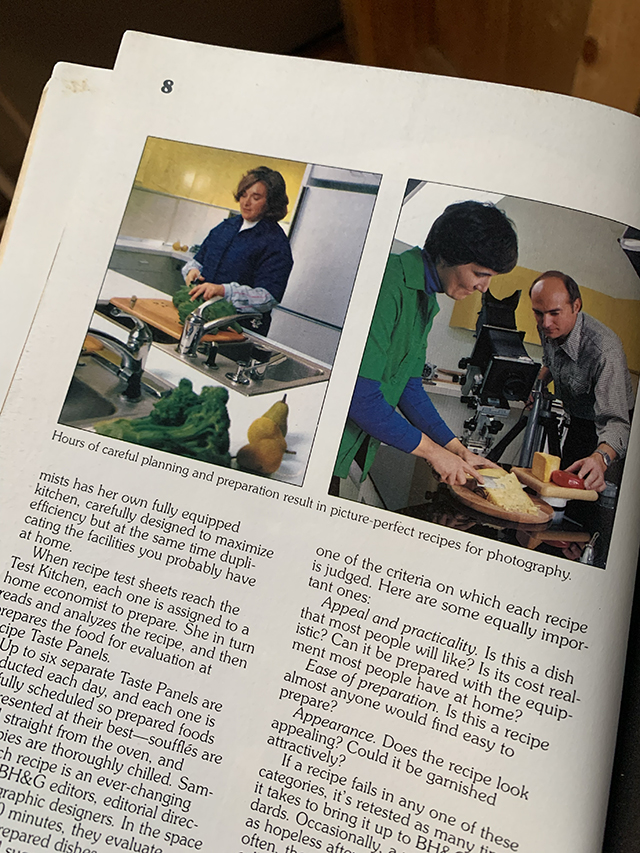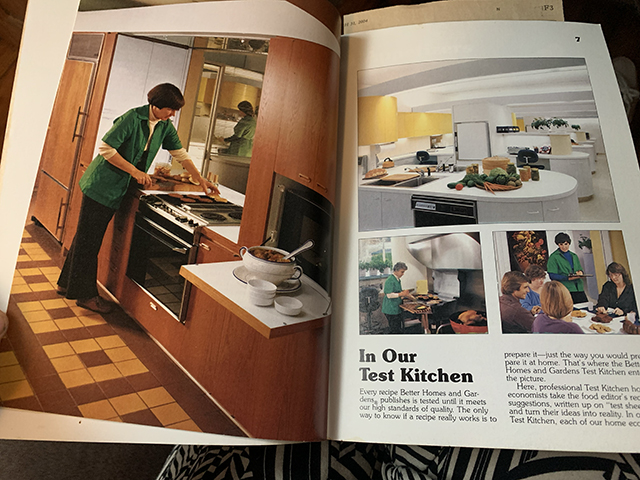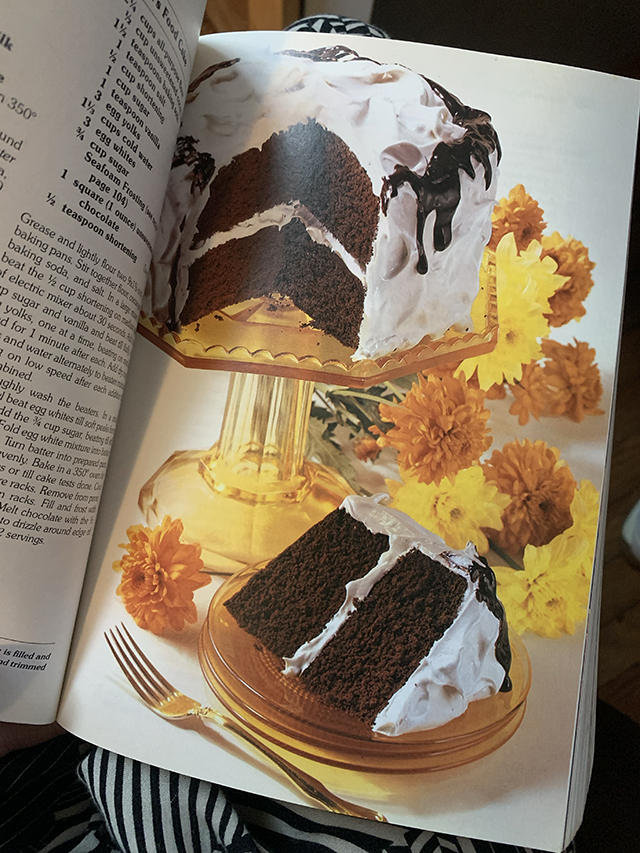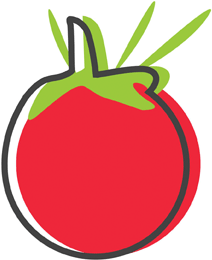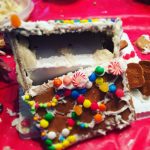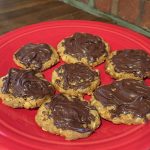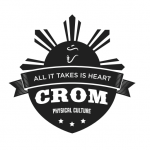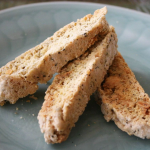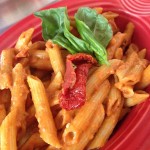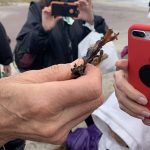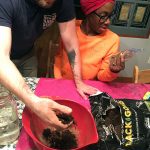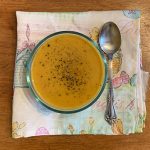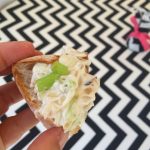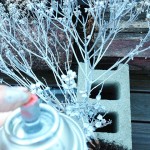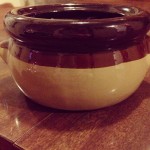by Paula D.
on March 10, 2023 12:00 pm in Instagram
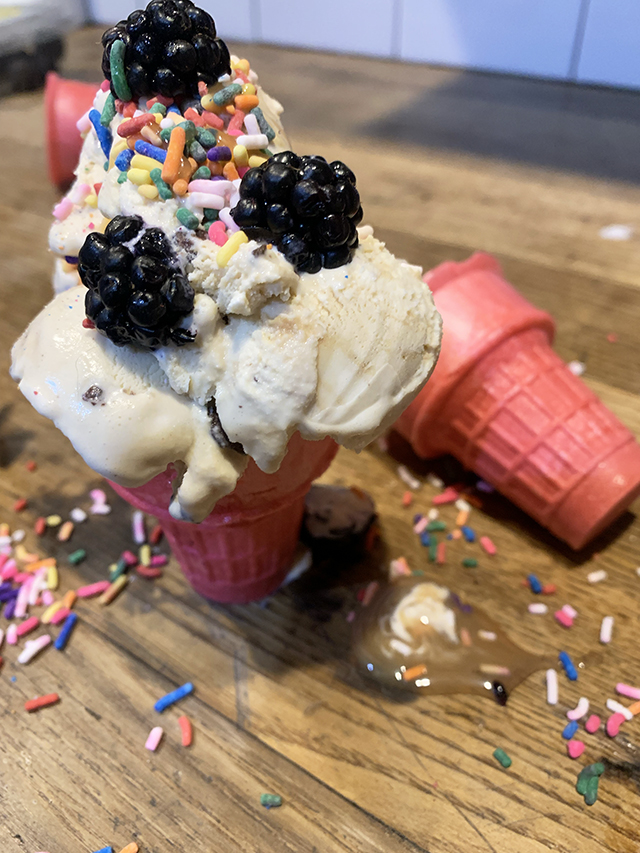
The home stretch of winter seems like a silly time to write about ice cream but here we are. I was never that into ice cream, not even as a kid. But people change. I’m an ice cream person now. I’ll save my ice cream story for a future, 5-part column. Better yet, it will be included in my tell-all memoir, of which Katie Honan will edit, but she doesn’t know it yet.
Over the summer I’d go to Mara’s Ice Cream Parlor a few times a week with my friend Teresa. We’d eat ice cream for dinner and lament about the Cookie Monster flavor shortage. During the holidays I got my fix at all the parties.
A few weeks ago I spotted cute, colorful, instagram-able ice cream cones in Key Food. I was leaning over my cart, debating… then clarity. F it. It’s cold out, but that doesn’t mean I can’t enjoy ice cream. The prospect of making my own ice cream cones with all the toppings, in the comfort of my own kitchen, hit like a warm rush of rainbow sprinkles washing over my serotonin receptors.

Next stop: The Museum of Ice Cream. Have you heard of it? Things weren’t adding up as my journey through 13 different “exhibits” progressed. Finally after the floating banana experience there was some history and artifacts on ice cream. These are fun:
-
1774 America’s first ice cream shop opened, located on Dock St. (now Pearl Street NYC).
-
1790 – George Washington first consumes ice cream.
-
1881 – The Sunday was born. Vanilla ice cream drizzled with different syrups, garnishes, and toppings is sold only on Sundays.
-
1929 – Willam Dreyer develops Rocky Road Ice cream as a metaphor, for the stock market crash.
Googling on the A train home, I learned The Museum of Ice Cream is not a museum. It’s a wannabe influencer’s instagram dream come true. That’s why I loved it so much! And you can eat ice cream throughout the whole experience. So there’s that too.
The interactive, multi-sensory “art” exhibit and adult pleasure playground was conceived in 2016 by then 24-year-old co-founder, Maryellis Bunn. Bunn is a California native and Parsons graduate. A quote in NYMag explains… a lot:
“Bunn found the city’s existing institutions disappointing: They hadn’t adapted to larger cultural currents, leaving little that would “engage and capture” her demographic.”
The Museum of Ice Cream started as a pop-up. It was self-funded by Bunn and co-founder Manish Vora (former CEO of Lightbox,). Thirty thousand tickets at $18 each sold out in under a week. Boom, you’re rich.
The selfie museum concept is disturbing and undeniably brilliant. If you like ice cream and the color pink, it’s a must on your culture calendar. It’s a fun, indoor winter activity for the whole family or the charismatic narcissistic.
Check out my fake influencer account – @theglorifiedtomato.

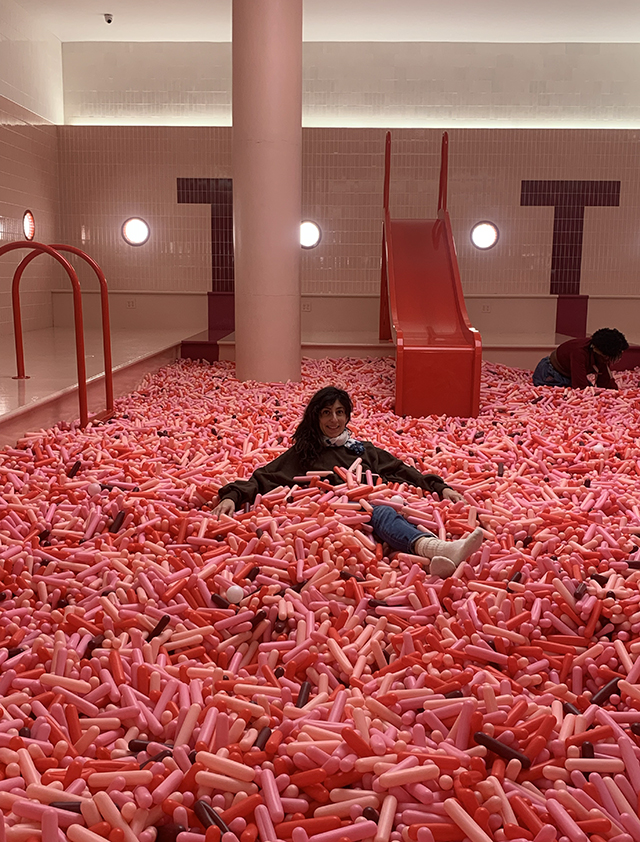


Three circumstances came together that inspired this column. I attended a baby birthday party over the weekend. I found an old “kids” book on the shelf. And the guest room switch-over to my art studio/office is complete.
Levi and Noah, my BFF’s kids turned 2 this weekend! The party was held the Rockaway Beach Brewery. I’m sitting at a table eating a delicious vanilla frosted cupcake, with my dinosaur party hat on, observing the little rugrats. I noticed their energetic movements, their curiosity and creative play. It was a breath of joy to share in their weird little world.
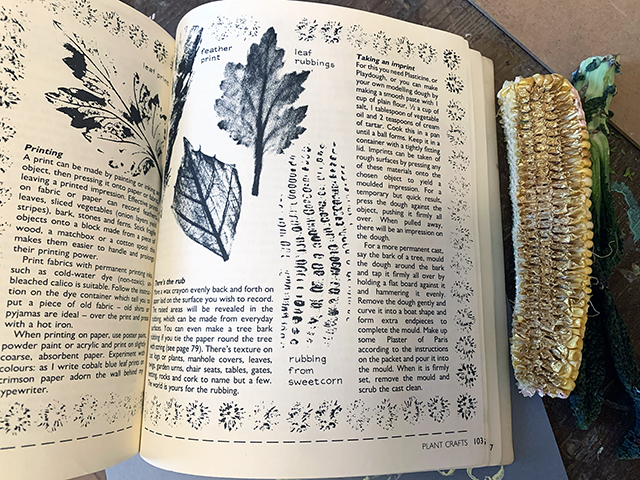
The next day, I was looking for a cookbook recipe to share with you. Instead, a flimsy, old book caught my attention. It’s called, Naturewatch, Exploring Nature With Your Children, by Adrienne Katz. I have know clue where this book came from but I’m glad it found me. The book’s chapters include: garden awareness, plants, garden visitors, crafts and magic plants. The ideas set in the book rest on familiar sights in urban environments – the obvious that without observation are most often overlooked.
The beauty of the black and white illustrations drew me in. Each section includes projects for the kids (and you). Some include: grow food from kitchen scraps, experimental potato obstacle course, peanut butter bird feeders, pressed flower pictures, natural dying, artwork from printing, seed necklace-making, catnip toys, bruise balm and more.
“There’s a way in which we can make visual recordings of tactile surfaces. A translation to picture from what we experience through our senses of touch. This actively leads to the discovery of many strange surfaces. It may be dishcloth or wrought iron gates passed every day, but recording in this way is like seeing it for the first time.”
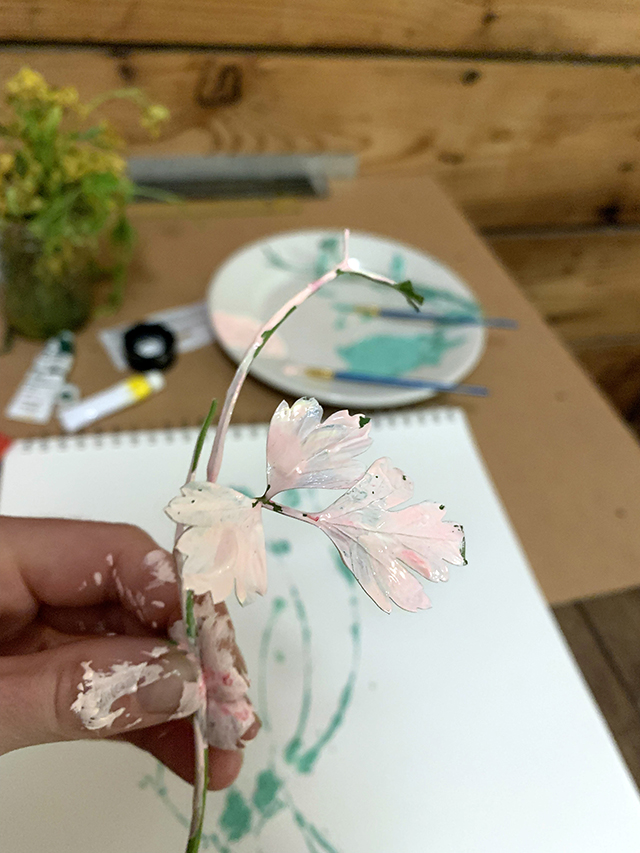
Inspired by the book, I decided the first project in my new art studio would be prints from food. I used – ready for composting- items found in my fridge. Here’s a guide for printmaking, rubs and imprints:
Printing: A print can be made by painting or inking an object, then pressing it onto paper or fabric leaving an impression. Consider: sliced vegetables like onion layers, pepper, mushroom, cauliflower, parsley or textured greens. Before printing, make sure the veggies are somewhat dried out. Also try natural things outside your home like bark, leaves and sticks.
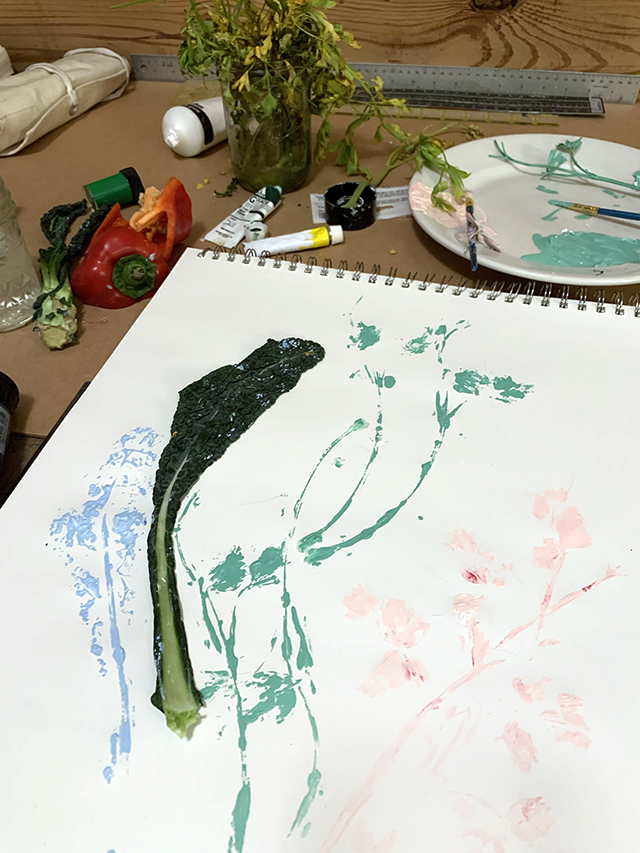
Transfers : Move a wax crayon or oil pastels back and forth on paper, laid on the source you wish to record. The raised areas will be revealed in the rubbing. Bring your crayons around town and record surfaces in the neighborhood! Some suggestions: a tree, a manhole cover, twigs, gates, brick.
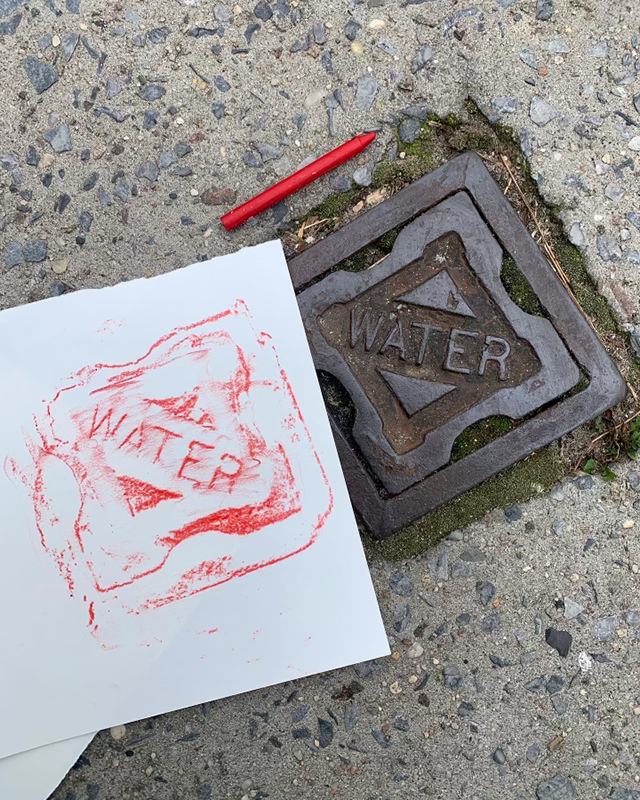
Imprints: Using plasticine, playdough or clay take impressions of rough surfaces by pressing on the chosen objects. Remove the clay gently. You can then use Plaster of Paris (according to the instructions) to make your imprints permanent. Try pebbles/rocks, shells or snail shells for this technique.
I found the printing process simple, rewarding, and sensory. I learned to adjust the pressure of my pressing (onto the paper) to get different effects and patterns, all from the same piece of food. And the textures are endless!. Some foods I thought would work well, for example corn, didn’t look great. Others, like an oddly cut pepper, worked very well. I discovered using colored paper had a nicer feeling than white paper. Fully engage. Get your hands messy. Don’t overthink it. Enjoy!
Naturewatch was published in 1986, but guess what… you can still purchase it on Amazon.
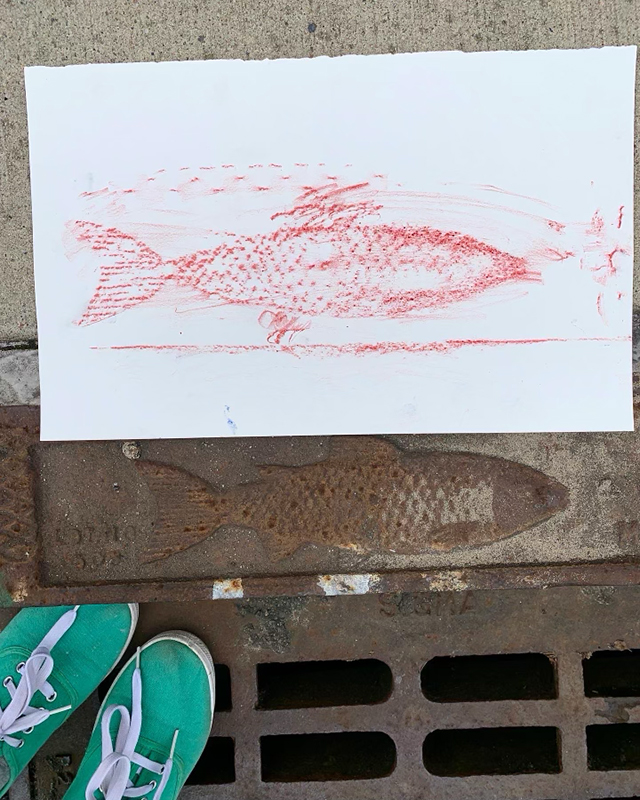
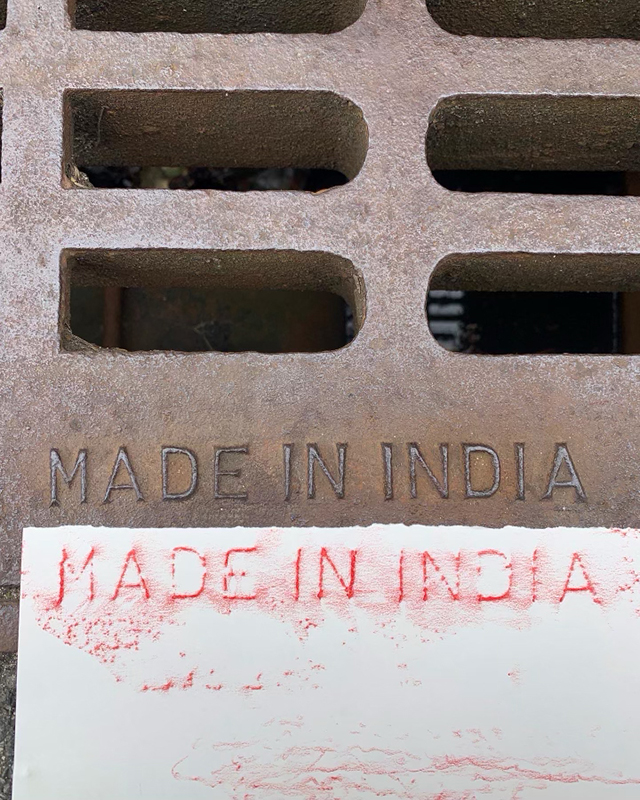
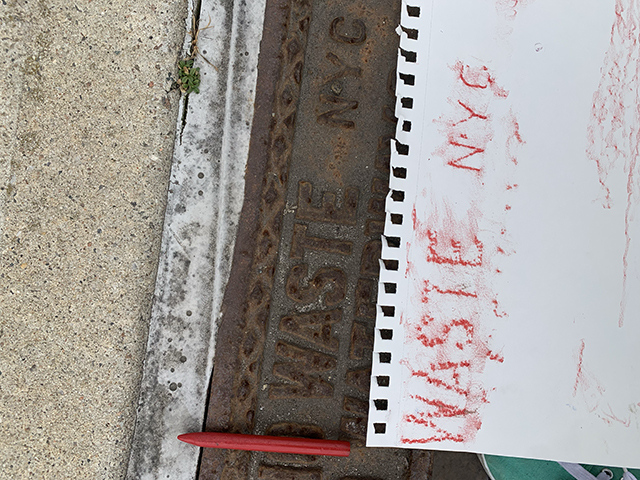
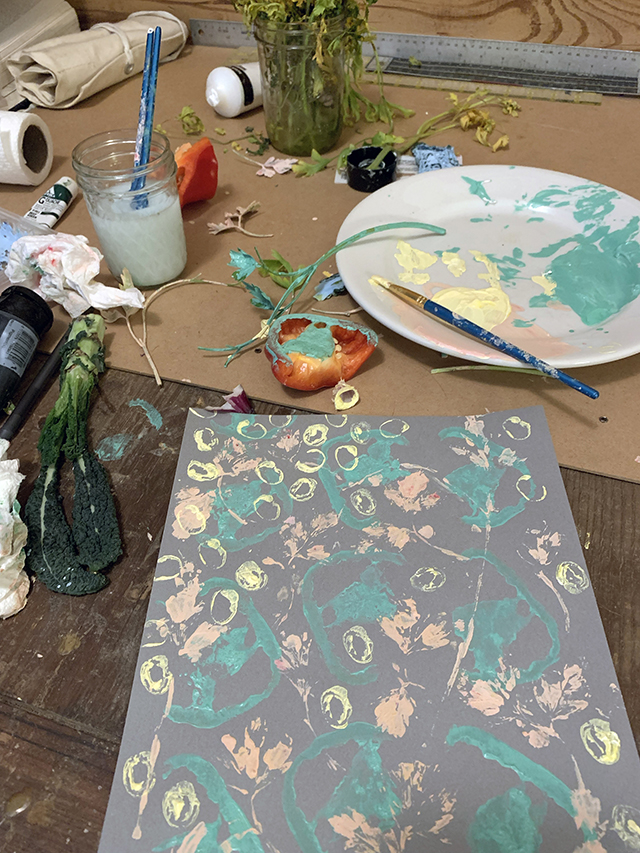
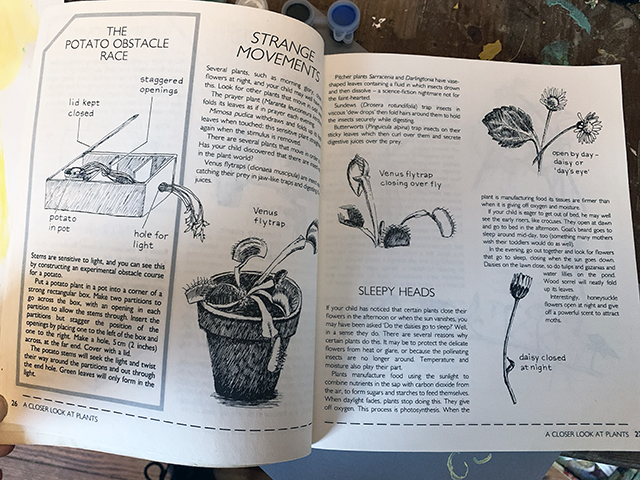
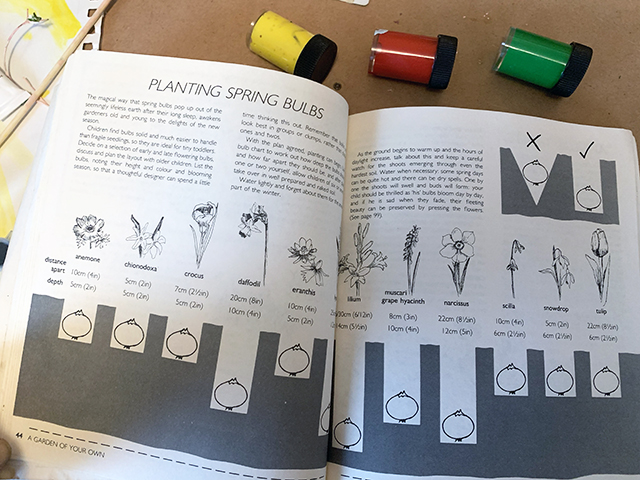
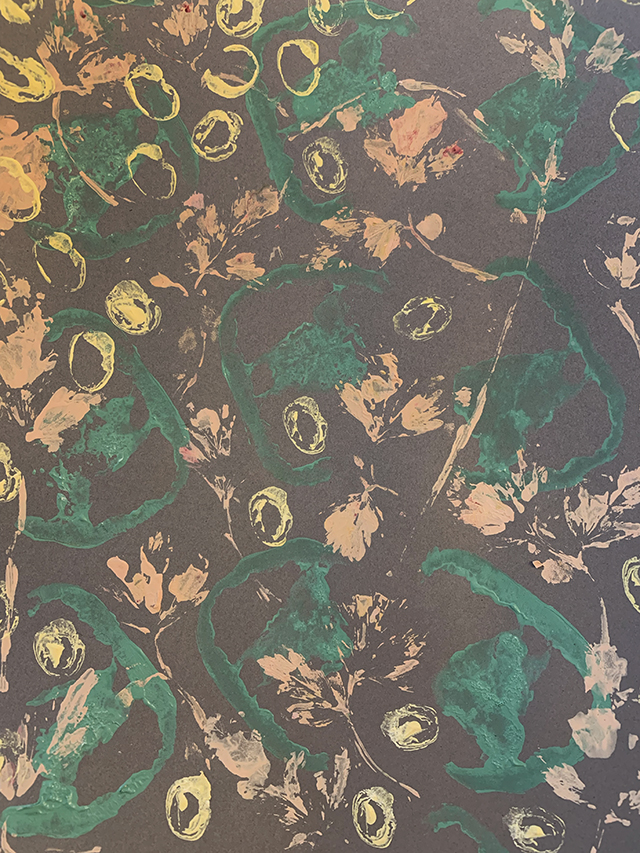
by Paula D.
on February 27, 2023 9:20 am in Family / Food
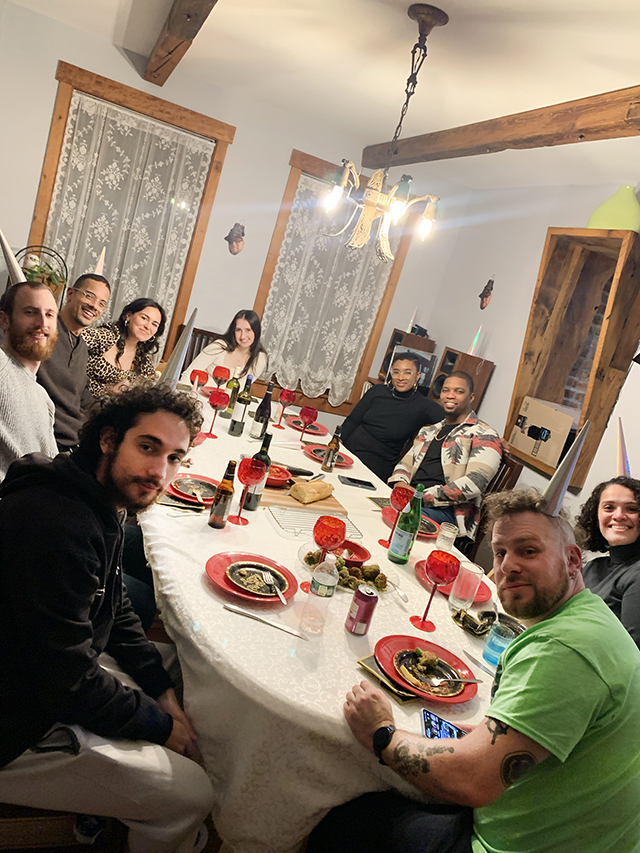
Three days of prep for three hours of perfezione. I learned how to throw a party by watching and helping my mother. We go to extremes. We indulge… we’re Italian. Too much food is all part of it. You need abundance so people feel comfortable around the table. You can’t have “Look at me, look at you.” This phrase I’ve lived with my whole life. Grandpa Ralph coined it. Here’s the best way I can explain…
There are a few morsels left on the table. No one wants to be “rude” and take it, but everyone is eyeing it, looking around the room, feeling out the situation (looking at me, looking at you). The guests are still hungry. Finally, someone says “Oh I’m so full, (obviously lying) you take, we can’t let it go to waste, blah blah blah.” This exchange goes back and forth until finally, one person “the lucky winner” gets the tiny piece of whatever is left.
“Look at me, look at you” is the most embarrassing situation a host can ever face (or someone having sex in your bathroom when there’s a line).
I was also taught, you need enough food to offer leftovers. In my family, sharing food is next in line to buying a diamond engagement ring. Feed the people you love. And practically speaking, you’re making a huge mess anyway, so you might as well make extra.
I asked my friend Good Keith if I could host his birthday dinner. Yes!, he said. GK asked for ziti but I know his favorite is chicken parmesan. I haven’t cooked meat in the house in years. I’m a flexitarian. I’ll eat meat if my mother puts it in front of me but I won’t cook it, I eat veggies. Here’s the flex… they don’t call him Good Keith for nothing… so chicken parmesan it was.
It felt so good to prep. I had the whole menu vision, timing, and presentation in my head. I was “workin the kitchen” for days. Making the sauce, chopping, buying, frying, adorning, and finally plating. I felt like a better, past version of myself and it was lovely to get reacquainted.
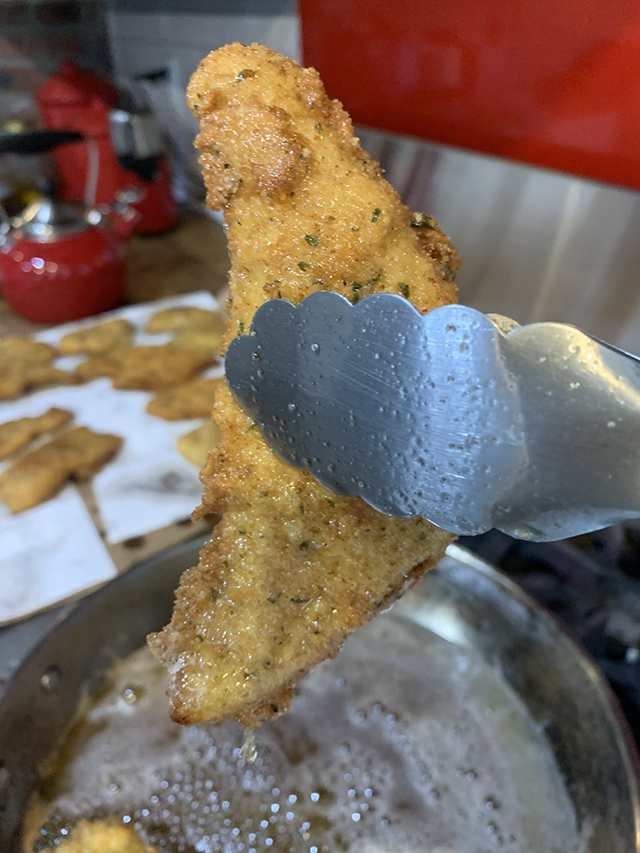
Making the chicken cutlets was like riding a bike. Here are the DiGioia family’s cardinal rules of frying:
- Cut the cutlets small. After tenderizing, the cutlets become even wider. Account for that. Make the pieces smaller than you think necessary. My family tenderizes with our wrist, while breading the cutlets. It’s the old country way. It saves time and works better. It’s important to cut each piece to a similar size so the chicken cooks at the same pace.
- Salt everything.
- The oil needs to be very hot. The chicken goes in and out only to brown. It will cook in the oven (parmigiana). You don’t want overcooked, oil-soaked cutlets.
- As annoyed as I used to get when my mother would scream at me, “Don’t play with it!” I learned over the years, she’s right. Place the breaded cutlet in the pan and just let it be. Flip once. The more you play with it, the more the breadcrumbs fall off leaving “bald spots” that contaminate the oil. When loose breadcrumbs fall into the oil, they burn quickly and stick to the food. This leads to…
- Don’t be lazy, change the oil when it gets dirty. I can’t stress the importance of this rule. Use an empty tomato can to pour the old oil into. Whip the frying pan clean with a paper towel and start again.
- Let the cutlets drip over the oil for 5-10 seconds before placing on the paper towels to drain. This saves oil, meaning you change it less. More importantly, don’t be cheap with paper towels. Drain the cutlets well by flipping and lightly pressing them on the towels. Do not layer/ cover them. They’ll get soggy.
For more over the pot, follow me on IG – @theglorifiedtomato.
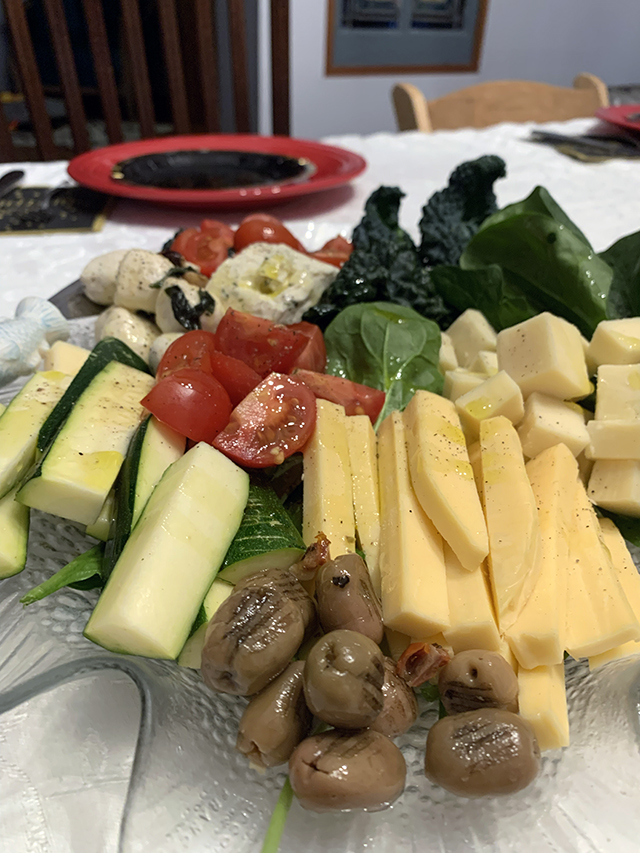
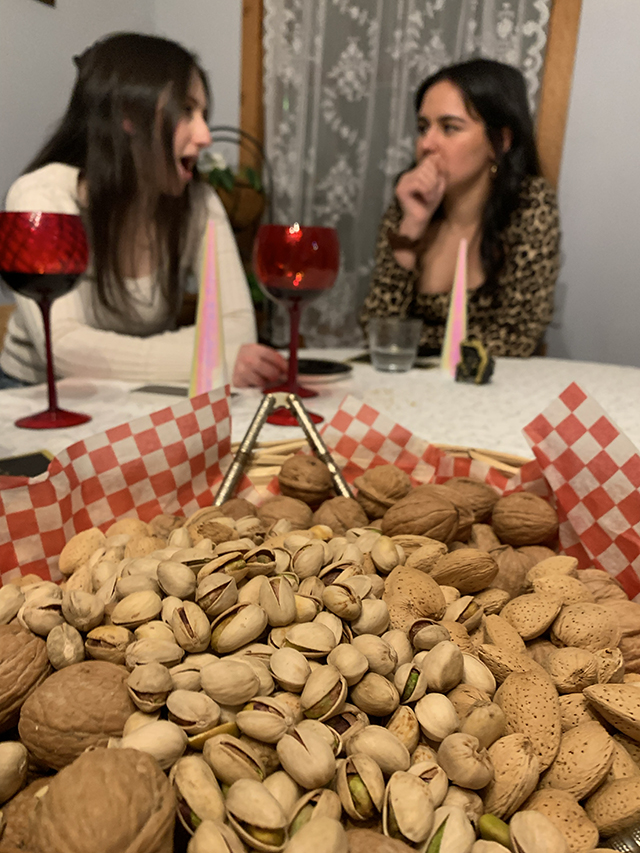
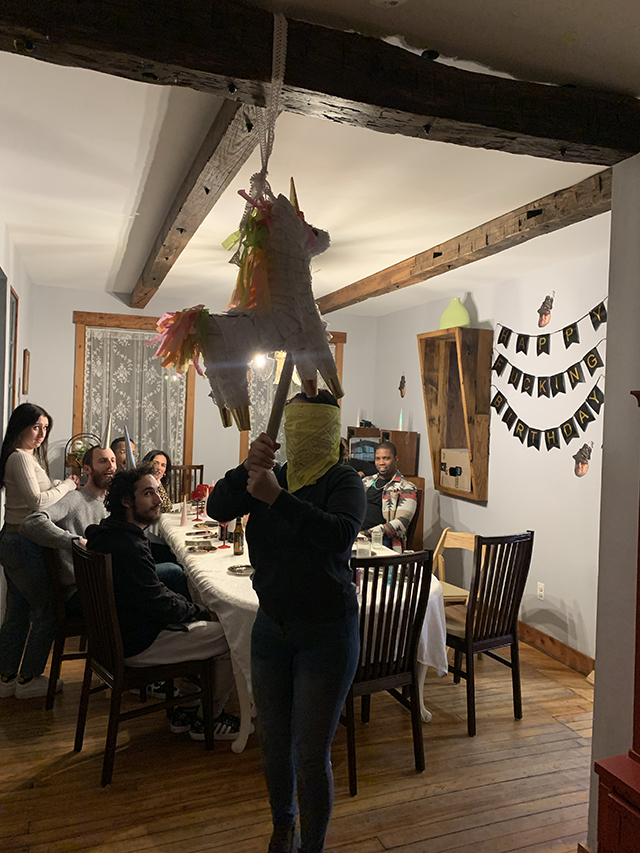
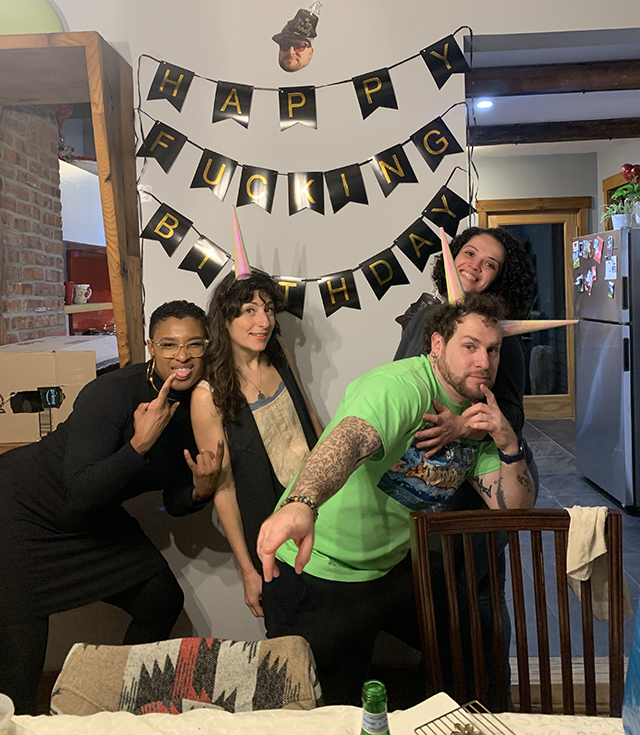
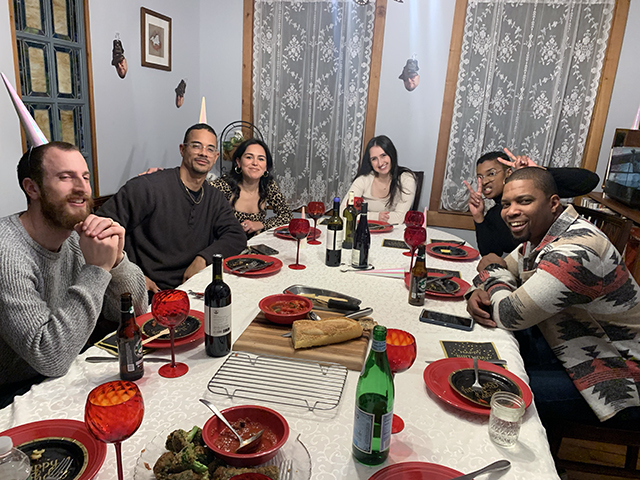
by Paula D.
on February 17, 2023 9:35 am in Food / Recipes
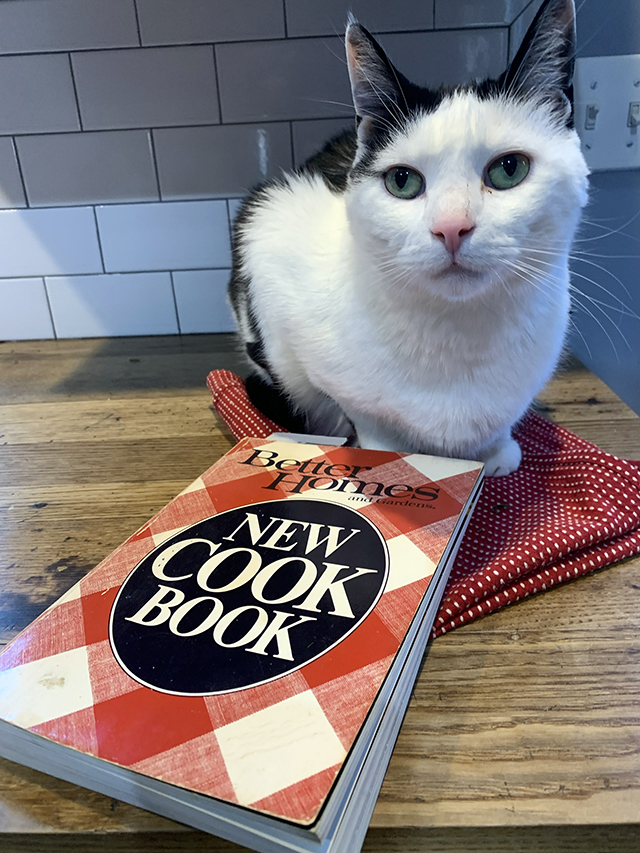
Most of my choices are based on aesthetics, not practicality. Look at this cover design! The book also matches my cat.
A few weeks back I wrote that I’ve pulled my cookbooks off the shelf, using them for recipes instead of the stupid internet. This week, I chose Better Homes and Gardens, New Cookbook. Note, “new” means published in 1981. That’s my birth year and all the more reason to try it out. Old doesn’t mean irrelevant. After flipping though, I firmly concluded this is a fantastic book. The recipes are concisely written; it includes informative nutrition analysis charts at the beginning of each section; the vintage photographs are dope (especially the jello fruit tower one) and lastly, the cover design matches my kitchen and my cat.
The biscuit section looked challenging, but not over-the-top hard. I decided on Pecan Biscuit Spirals which sounded pretty delicious. I added dried cranberries because I always feel compelled to put my own spin on things.
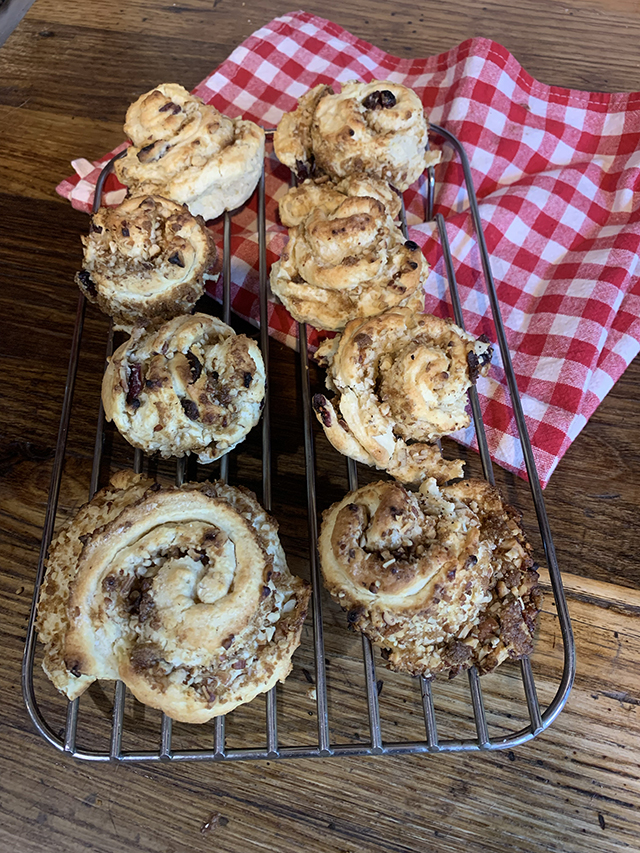
Pecan Biscuit Spirals
Ingredients:
2 cups all-purpose flour
2 tablespoons granulated sugar
1 tablespoon baking powder
½ teaspoon salt
½ cup butter
1 beaten egg
½ cup milk
3 tablespoon butter, melted
¼ cup finely chopped pecans
3 tablespoons brown sugar
⅓ cup dried cranberries (optional)
Directions: In a mixing bowl stir together flour, 2 tablespoons granulated sugar, baking powder, and salt. Cut in ½ cup butter until the mixture resembles coarse crumbs. Make a well in the center. Combine egg and milk; add all at once to the dry mixture. Stir just until dough clings together. Knead gently on a lightly floured surface for 12-15 strokes.
Roll dough into a 15×8 inch rectangle. Brush with 1 ½ tablespoon melted butter. Combine pecans and 3 tablespoons brown sugar; sprinkle over dough. Fold dough in half lengthwise to make a 15×4 inch rectangle. Cut into 15, 1 inch strips. Holding a strip at both ends, carefully twist in opposite directions twice, forming a spiral. Place on a lightly greased baking sheet, pressing both ends down. Baste with butter. Bake in a 450 oven for about 10 minutes. Makes 15 spirals.
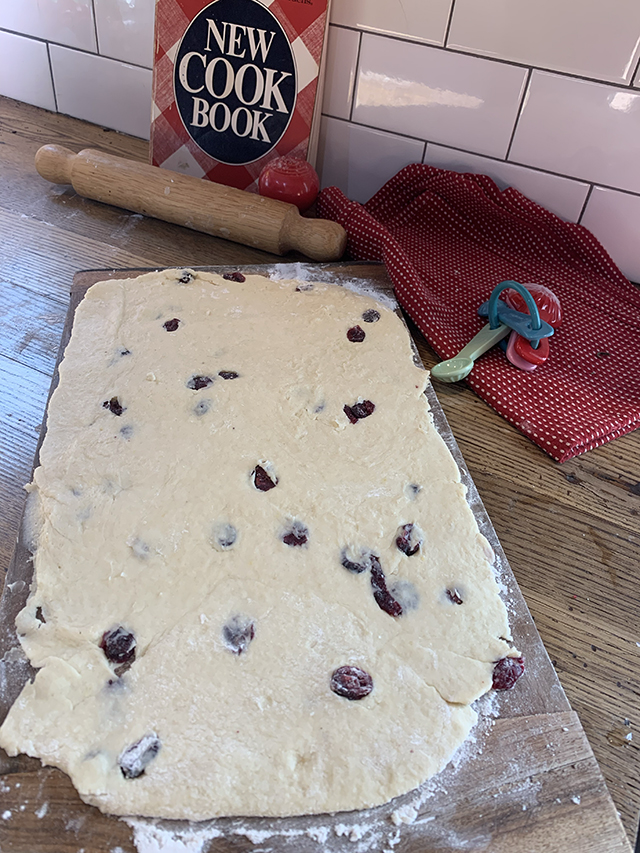
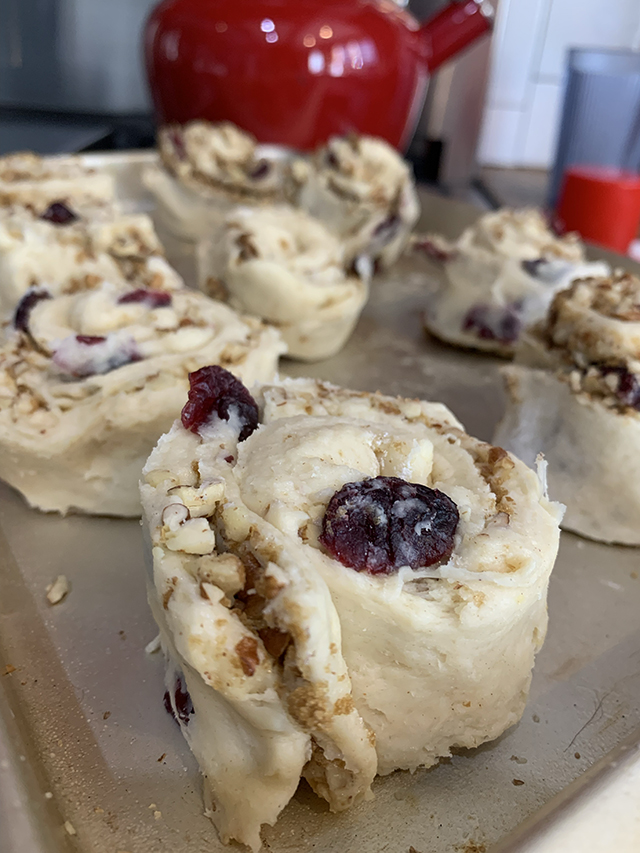
The take away… they were really good for my first time baking biscuits. Any English nanny or Captain Picard would have enjoyed these with a cup of Earl Grey (hot). Next time I’ll butter baste the biscuits before putting them in the oven. My biscuits looked undercooked and the butter would help to brown them. Also, I forgot to rotate the tray. I have a convection oven and rotating is important, especially when baking.
Here’s the kicker: after typing out the recipe for this column and re-reading it, I’ve realized I may have shaped the biscuits incorrectly. I took “spirl” to mean a pinwheel shape. I believe the recipe meant a twisted elongated shape. This would make sense as the recipe says “makes 15 pieces.” And it would attest to my undercooked biscuits. I thought biscuits are round
Next time I’ll try the long twist shape. Making a recipe blindly and kinda failing is all part of the fun! It’s the beauty of traditional cooking. And by that I mean without having a start-to-finish TikTok reel showing you exactly how it all goes and how perfect it should look.
These vintage photos from the book are everything…
